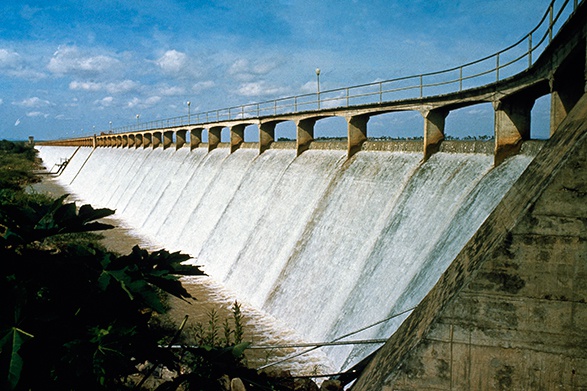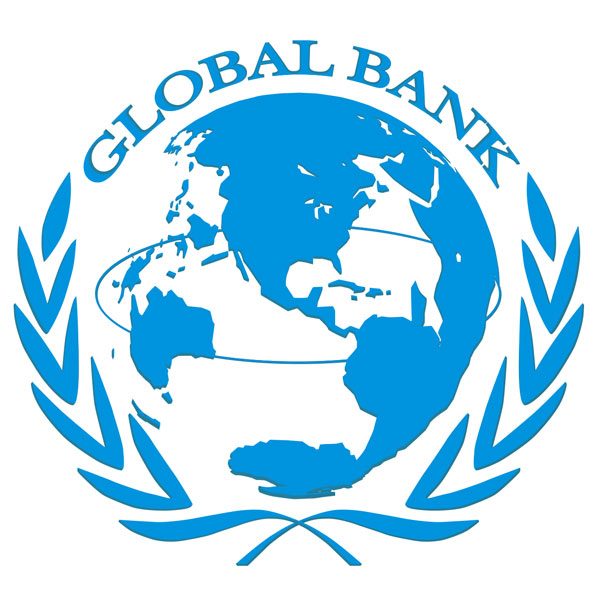
Los Angeles, CA – October 13, 2019 – In 2001, the United Nations General Assembly decided to maintain the observance of the International Day for Natural Disaster Reduction on Sunday the 13th day of October (Resolution 64/200, 21 December 2009) to raise the profile of disaster risk reduction as a vehicle to promote a global culture of natural disaster reduction, including disaster prevention, mitigation, and preparedness. On the annual observance of the International Day for Natural Disaster Reduction, the Global Bank Disaster Risk Reduction and Reconstruction Fund – An Umbrella Trust Fund (GB-DRRRF) works to encourage people and governments to participate in building more resilient communities and nations.
This year’s theme is based on Target (d) of the Sendai Framework for Disaster Risk Reduction 2015-2030: ‘Substantially reduce disaster damage to critical infrastructure and disruption services, among them health and education facilities, including through developing their resilience by 2030’.
The celebration of the annual observance of the International Day for Natural Disaster Reduction on the 13th day of October, is a vehicle to promote a global culture of natural disaster reduction, including prevention, mitigation and preparedness and stressing the need for the international community to demonstrate the firm political determination required to utilize scientific and technical knowledge to reduce vulnerability to natural disasters and environmental hazards, taking into account the particular needs of developing countries.
Background
Natural hazards are severe, and extreme weather and climate events. Although they occur in all parts of the world, some regions are more vulnerable to certain hazards than others. Natural hazards become disasters when people’s lives and livelihoods are destroyed. Every year, major earthquakes, floods, fires, and hurricanes occur. These natural disasters disrupt daily life and, in the worst cases, cause devastation. Events such as the 2010 Haiti earthquake, the 2004 Indian Ocean earthquake and tsunami, the 2005 Hurricanes Katrina, the 2011 Tōhoku earthquake and tsunami, and the 2012 Hurricanes Sandy killed thousands of people and generated billions of dollars in losses.
Millions of lives have been shattered every year by disasters such as drought, storms, earthquakes, landslides, and heatwaves that unleash dramatic levels of devastation. Although disasters are quick to strike, their consequences can linger for months and years.
According to one of the world’s leading reinsurers Munich Re natural disaster figures for the first half of 2019:
- A total of 370 loss events produced overall losses of US$ 42bn, which, after adjustment for inflation, is lower than the 30-year average of US$ 69bn. However, the losses from the severe floods in southeast China, which began in June and reportedly caused billions of dollars in damage, are not included in this figure.
- Insured losses came to US$ 15bn, which is below the long-term average of US$ 18bn. For many events, the insured portion of the overall economic loss was extremely small due to low insurance penetration in many of the affected countries.
- Around 4,200 people lost their lives in natural disasters. This figure is similar to that of the previous year (approximately 4,300). But at least the trend towards fewer casualties has continued, thanks to more effective protection measures: the 30-year average for the same half-year period is more than 27,000 fatalities.
- The deadliest disaster worldwide up to the end of June was Cyclone Idai, which swept across Mozambique, Malawi, Zimbabwe, and South Africa from 9 to 14 March. More than 1,000 people were killed.
- In May, thunderstorms with tornadoes in the Midwestern US produced the heaviest losses at US$ 3.3bn. The insured portion came to around US$ 2.5bn.
Investing in resilient infrastructure
Public and private investment in disaster risk prevention and reduction through structural and non-structural measures are essential to enhance the economic, social, health, and cultural resilience of persons, communities, countries, and their assets, as well as the environment. These can be drivers of innovation, growth and job creation. Such measures are cost-effective and instrumental for saving lives, preventing and reducing losses, and ensuring effective recovery and rehabilitation. The objective of the Global Bank Disaster Risk Reduction and Reconstruction Fund – An Umbrella Trust Fund in infrastructure is to improve alignment and coordination between established and new infrastructure initiatives. As well as among multilateral and national development banks, national institutions, and the private sector, to bridge the ‘infrastructure investment gap’ and to facilitate the implementation of sustainable, accessible and resilient infrastructure, particularly for developing countries.
References
- United Nations General Assembly Session 44, Resolution 236. International Decade for Natural Disaster Reduction A/RES/44/236 22 December 1989. Retrieved 2008-09-18.
- United Nations General Assembly Session 56, Resolution 195. International Strategy for Disaster Reduction A/RES/56/195 21 January 2002. Retrieved 2008-09-18.
- United Nations General Assembly Session 64, Resolution 200. International Strategy for Disaster Reduction A/64/200 21 December 2009. Retrieved 2011-10-14.
GB-DRRRF links
- Disaster and Climate Risk Assessment
- Enhancing Disaster Preparedness for Effective Response
- Investing in Disaster Risk Reduction for Resilience
- Promoting Resilience Infrastructure
- Effective Post-Disaster Reconstruction and Recovery
- The Chairman of Global Bank Group Ron Nechemia to Lead the Global Bank Delegation at Japan's First-Ever G-20 Development Working Group's Meeting
Related links







